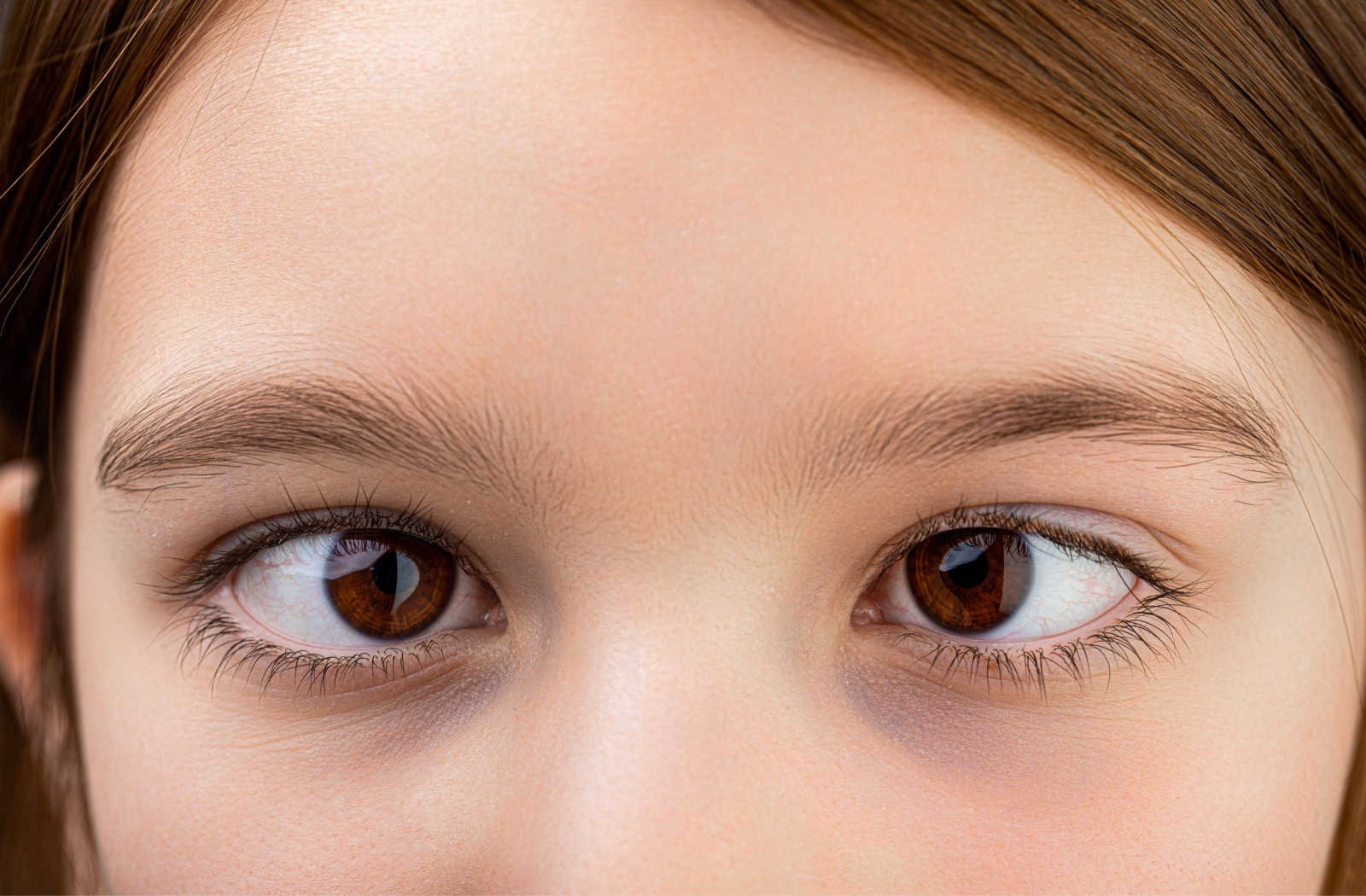Strabismus, also known as crossed eyes, is an ocular condition where your eyes don’t properly align. It can cause various visual problems, including double vision, reduced depth perception, and vision loss. Our vision therapy programs can be a valuable treatment to help correct your strabismus.
Vision therapy provided by knowledgeable, experienced eye doctors can be an effective form of treatment for strabismus. At Specialty Eye, our doctors are skilled at designing individualized vision therapy plans to help you develop and strengthen the visual skills you need to improve your vision.

What Is Strabismus?
Strabismus occurs when both eyes look in different directions simultaneously and is often linked to eye muscle function. There are 6 muscles that attach to each eye, which receive messages from the brain to control movement. If there’s a dysfunction in muscle control, your eyes may not align fully.
Strabismus can be classified by its turning direction into 4 types:
Hypertropia: turning upward
Hypotropia: turning downward
Esotropia: turning inward
Exotropia: turning outward
Eye alignment is critical for healthy vision, good depth perception, and avoiding double vision. If left untreated, your brain can favor the dominant eye over the other, leading to amblyopia (lazy eye).
Children are more likely to develop strabismus, which typically presents before age 3. Unfortunately, strabismus isn’t something a child will outgrow, and you should seek treatment to prevent complications. Our experienced doctors are skilled at identifying strabismus and can help develop a personalized vision therapy treatment program to support healthy vision function.
Causes & Symptoms of Strabismus
Crossed eyes can stem from a dysfunction in your eye muscles, the nerves that send signals to your eye muscles, or the connection in your brain that controls eye movement. Some factors that can contribute to the development of strabismus include:
Medical conditions, such as a brain injury or cerebral palsy
Uncorrected farsightedness (hyperopia)
A family history of strabismus
If your child is too young to verbalize their vision problems, you can observe certain behaviors to determine whether you need to seek treatment, such as:
Misaligned eyes
Recurrent squinting or blinking
Tilting the head to look at objects
Eyes that don’t move together
If your child is slightly older, they may recognize they have double vision or their depth perception is off.
At Specialty Eye, our doctors can help patients understand and overcome strabismus with specialized techniques and training. We can create a personalized vision therapy plan and provide ongoing guidance for patients of all ages.
How Can Vision Therapy Help Strabismus?
Vision therapy is a treatment program we individualize for each patient to help improve visual skills with exercises and therapeutic tools, such as specialized lenses, filters, balance boards, and digital simulations.
Our team at Specialty Eye works alongside The Mind’s Eye Center to train patients’ eyes and brain to work together effectively. Training the brain can help improve visual skills and clarity to support success and enjoyment with school, sports, and hobbies.
Our doctors and vision therapists can work with you to improve binocular vision, stereopsis, and fusion, which can help improve overall vision, 3D perception, and depth perception. Focusing on these areas can help keep eyes from wandering and support proper alignment.
With the appropriate techniques, activities, and tools, vision therapy can help reduce eye turn and reinforce muscle control over time.
Strabismus Surgery
Sometimes surgery is required to correct strabismus, and if you or your child need surgical intervention, our experienced staff at Specialty Eye will work alongside your surgeon to support your treatment and meet your needs for quality care.
We can help you prepare for surgery with vision therapy and continue your treatments during your recovery to amplify the results. The goal is to make school, reading, and activities more comfortable and restore visual confidence to increase the benefits of corrective surgery.

Manage Strabismus with Vision Therapy at Specialty Eye
Personalized vision therapy is an effective treatment option we provide for patients with strabismus. It can effectively improve binocular function, visual acuity, and depth perception problems associated with crossed eyes.
At Specialty Eye, our doctors apply an individualized approach to optimize patient outcomes, and we can work with other eye care professionals as needed to provide comprehensive care during every step of your treatment.If you or a loved one suffers from strabismus, contact our team at Specialty Eye today to learn more about our individualized approach.

